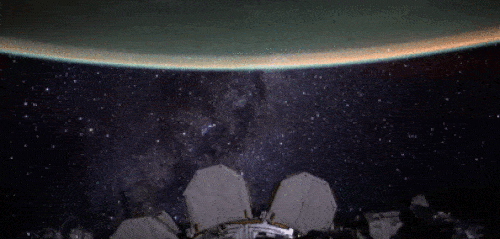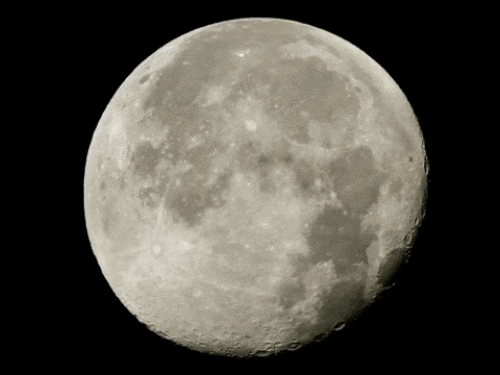Your gateway to endless inspiration
SpottheStation - Blog Posts
All About That (Nucleic) Base
Studying DNA Aboard the International Space Station
What do astronauts, microbes and plants all have in common? Each relies on DNA – essentially a computer code for living things – to grow and thrive. The microscopic size of DNA, however, can create some big challenges for studying it aboard the International Space Station.

The real question about DNA in space: but why, tho?
Studying DNA in space could lead to a better understanding of microgravity’s impact on living organisms and could also offer ways to identify unknown microbes in spacecraft, humans and the deep space locations we hope to visit one day.

Most Earth-based molecular research equipment is large and requires significant amounts of power to run. Those are two characteristics that can be difficult to support aboard the station, so previous research samples requiring DNA amplification and sequencing had to be stored in space until they could be sent back to Earth aboard a cargo spacecraft, adding to the time required to get results.
Fun science pro tip: amplification means to make lots and lots of copies of a specific section of DNA.

However, all of that has changed in a few short years as we’ve worked to find new solutions for rapid in-flight molecular testing aboard the space station.
“We need[ed] to get machines to be compact, portable, robust, and independent of much power generation to allow for more agile testing in space,” NASA astronaut and molecular biologist Kate Rubins said in a 2016 downlink with the National Institutes of Health.
The result? An advanced suite of tabletop and palm-sized tools including MinION, miniPCR, and Wet-Lab-2, and more tools and processes on the horizon.
The timeline:
Space-based DNA testing took off in 2016 with the Biomolecule Sequencer.

Comprised of the MinION sequencer and a Surface Pro 3 tablet for analysis, the tool was used to sequence DNA in space for the first time with Rubins at the helm.
In 2017, that tool was used again for Genes in Space-3, as NASA astronaut Peggy Whitson collected and tested samples of microbial growth from around the station.

Alongside MinION, astronauts also tested miniPCR, a thermal cycler used to perform the polymerase chain reaction. Together these platforms provided the identification of unknown station microbes for the first time EVER from space.
This year, those testing capabilities translated into an even stronger portfolio of DNA-focused research for the orbiting laboratory’s fast-paced science schedule. For example, miniPCR is being used to test weakened immune systems and DNA alterations as part of a student-designed investigation known as Genes in Space-5.

The study hopes to reveal more about astronaut health and potential stress-related changes to DNA created by spaceflight. Additionally, WetLab-2 facility is a suite of tools aboard the station designed to process biological samples for real-time gene expression analysis.

More tools for filling out the complete molecular studies opportunities on the orbiting laboratory are heading to space soon.
“The mini revolution has begun,” said Sarah Wallace, our principal investigator for the upcoming Biomolecule Extraction and Sequencing Technology (BEST) investigation. “These are very small, efficient tools. We have a nicely equipped molecular lab on station and devices ideally sized for spaceflight.”

BEST is scheduled to launch to the station later this spring and will compare swab-to-sequencer testing of unknown microbes aboard the space station against current culture-based methods.
Fast, reliable sequencing and identification processes could keep explorers safer on missions into deep space. On Earth, these technologies may make genetic research more accessible, affordable and mobile.
To learn more about the science happening aboard the space station, follow @ISS_Research for daily updates. For opportunities to see the space station pass over your town, check out Spot the Station.
Make sure to follow us on Tumblr for your regular dose of space: http://nasa.tumblr.com.
What’s That in the Night Sky?
The night sky has really been showing off lately. During the past week, we’ve had the chance to see some amazing sights by simply just looking up!
On Wednesday, Dec. 29, we were greeted by a flyby of the International Space Station over much of the east coast.
When the space station flies overhead, it’s usually easy to spot because it’s the third brightest object in the night sky. You can even enter your location into THIS website and get a list of dates/times when it will be flying over you!
One of our NASA Headquarters Photographers ventured to the Washington National Cathedral to capture the pass in action.

Then, on Saturday, Dec. 2, just one day before the peak of this month’s supermoon, the space station was seen passing in front of the Moon.
Captured by another NASA HQ Photographer, this composite image shows the space station, with a crew of six onboard, as its silhouette transits the Moon at roughly five miles per second.

Here’s an animated version of the transit.

To top off all of this night sky greatness, are these beautiful images of the Dec. 3 supermoon. This marked the first of three consecutive supermoons taking the celestial stage. The two others will occur on Jan. 1 and Jan. 31, 2018.

A supermoon occurs when the moon’s orbit is closest to Earth at the same time that it is full.

Are you this pilot? An aircraft taking off from Ronald Reagan National Airport is seen passing in front of the Moon as it rose on Sunday.
Learn more about the upcoming supermoons:
To learn more about what you can expect to spot in the sky this month, visit: https://solarsystem.nasa.gov/news/2017/12/04/whats-up-december-2017
Discover when the International Space Station will be visible over your area by visiting: https://spotthestation.nasa.gov/
Learn more about our Moon at: https://moon.nasa.gov/
Make sure to follow us on Tumblr for your regular dose of space: http://nasa.tumblr.com.
Spot the International Space Station
Right now, there are humans living and working off the Earth on the International Space Station. They orbit our planet from 250 miles above every 90 minutes, which means the crew sees 16 sunrises and sunsets every day.

If you’re in the right place, at the right time, the space station is visible to the naked eye. It looks like a fast-moving plane, only much higher and traveling thousands of miles an hour faster. The fact that it’s the third brightest object in the sky makes it easier to spot…if you know when to look up.
That’s where we can help! Our Spot the Station site allows you to enter your location and find out when the space station will be flying overhead. You can even sign up to receive alerts that will send you email or text messages to let you know when and where to look up.

Why is the space station visible? It reflects the light of the Sun, the same reason we can see the Moon. However, unlike the Moon, the space station isn’t bright enough to see during the day.
To find out when the space station is flying over your area, visit: http://spotthestation.nasa.gov/
Learn more about the International Space Station and the crew HERE.
Make sure to follow us on Tumblr for your regular dose of space: http://nasa.tumblr.com
International Space Station

The International Space Station is an important and special place that is built on international cooperation and partnership. The station is a convergence of science, technology and human innovation that benefits and advances our global community here on Earth.

While the space station is an important aspect of our low-Earth orbit exploration, it is also the key to our next giant leap to deep space and our Journey to Mars. For example, our recent VEGGIE experiment aboard the space station is a critical aspect of long-duration exploration missions farther into the solar system. Food grown in space will be a resource for crew members that can provide them will essential vitamins and nutrients that will help enable deep space pioneering.
Another important experiment underway is the Twins Study that involves twin astronauts Scott and Mark Kelly. These investigations will provide insight into the subtle effects and changes that may occur in spaceflight as compared to Earth by studying two individuals who have the same genetics, but are in different environments for one year. You can follow Scott Kelly as he spends a year in space.

The space station is the second brightest object in the sky (after the moon, of course), and you don’t even need a telescope to see it! We can even tell you exactly when and where to look up to Spot the Station in your area!
So, as you look to spot the station in the sky, remember that even though it may look small from Earth, the crew onboard (and at home) are making contributions to international partnerships and global research.